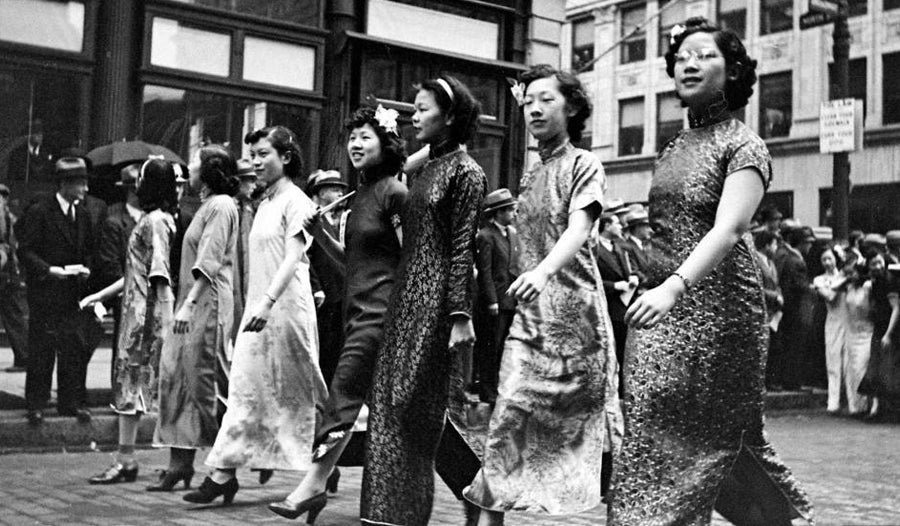
Asian Fashion Archive
 Image: Chinese Humiliation Parade, May 10, 1938. New York City. Photographer: Peter Stackpole for LIFE Magazine.
Image: Chinese Humiliation Parade, May 10, 1938. New York City. Photographer: Peter Stackpole for LIFE Magazine.
The Asian Fashion Archive is an online resource hub that celebrates the fashion, culture and history of Asia. Bringing together fashion photography, images, publications, exhibitions, videos and film covering East Asian, South-East Asian, and South Asian regions, the archive is an indispensable resource for those seeking to educate themselves about the rich and distinctive fashion and textile traditions of Asia. The Archive’s Instagram page highlights images and stories of people, groups and organisations who have influenced the direction of Asian fashion and history. Using ‘Instagram Guides’ they shine a spotlight on collections of their posts around various themes: AAPI (Asian Americans and Pacific Islanders) Fashion History Guide, 1970s Asian Fashion History Guide; and Asian Garments and Accessories.
The site has a wealth of film content covering textile techniques, workshop tours and historical surveys. We’ve selected some of our top video picks from the Asian Fashion Archive below:
Ari work is a kind of chain-stitching done using a hooked needle called an awl. The technique likely originated in the Mochi community, a group that traditionally made and repaired footwear. Originally developed for embroidering decorative elements onto leather shoes and horse trappings (harnesses and ornamental coverings), ari was later adapted for use on cloth.
This video shows the ari technique being used to make a lehnga (skirt) – from traced outline to finished product – at the Sankalan embroidery workshop in Jaipur, Rajasthan.
This video from The Met discusses the symbolism of a ceramic figure of a lady created during the Tang Dynasty - the age marked by strong and benevolent rule, successful diplomatic relationships, economic expansion, and a cultural explosion of cosmopolitan style. From 618 - 907, Tang China emerged as one of the greatest empires in the medieval world. This figure brings to life a leisure moment at the Tang imperial court. A plump young woman sits in a relaxed pose, a playful lapdog at her feet. Bright, clear-toned glazes, a recent innovation in ceramic technology at the time, enhance her jacket, sash, and skirts with striking colors. The hourglass-shaped stool, originally made of rattan in South Asia, points to the overseas trade and exchange during this prosperous and cosmopolitan age.
Find out more and explore the wealth of information on the Asian Fashion Archive website. Follow the Asian Fashion Archive on Instagram: @asianfashionarchive
